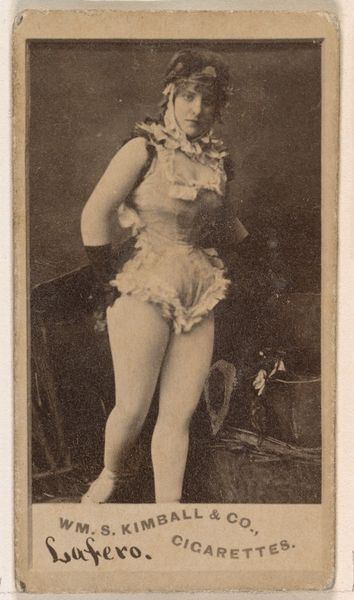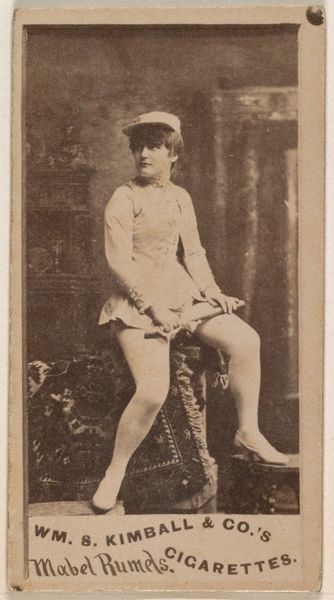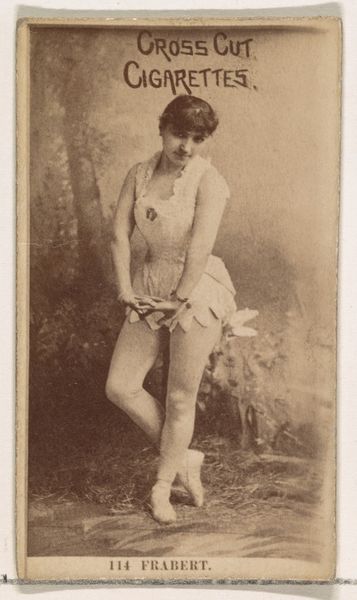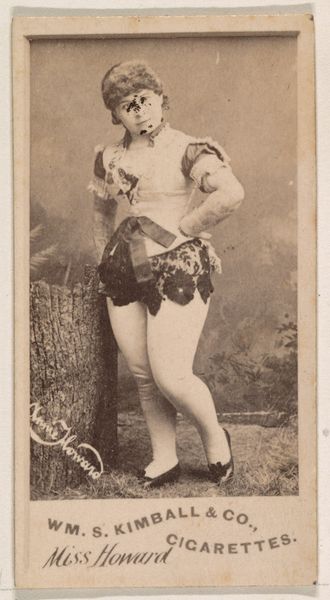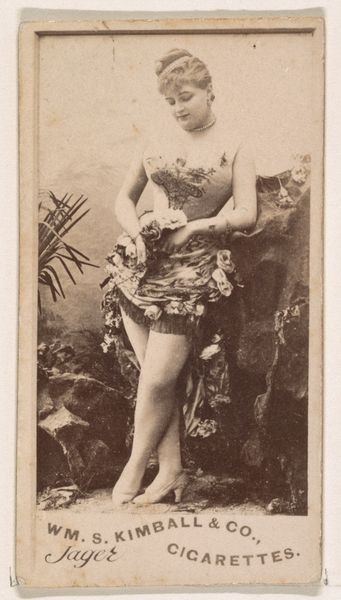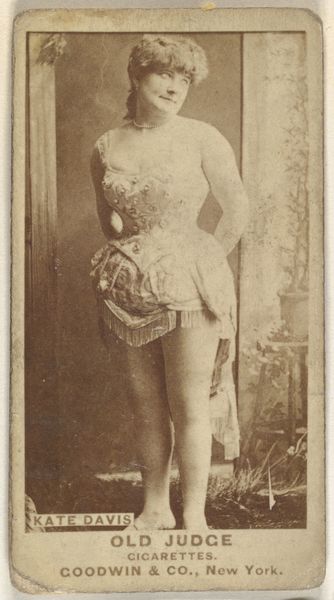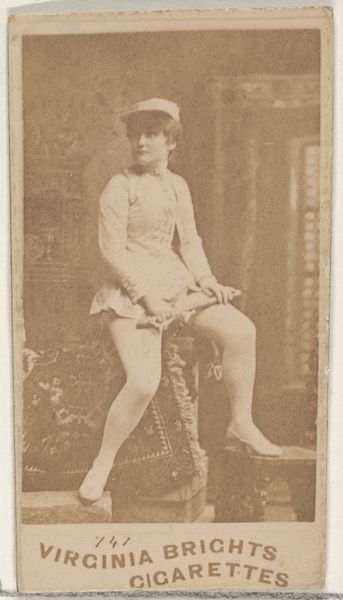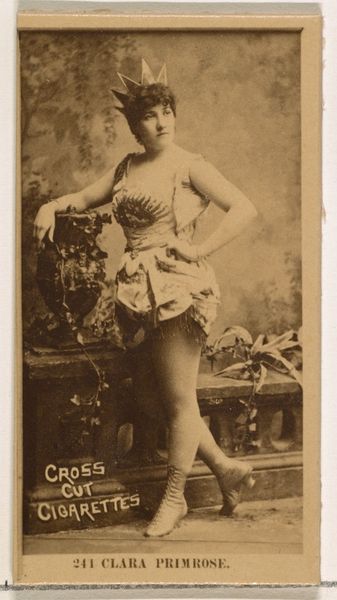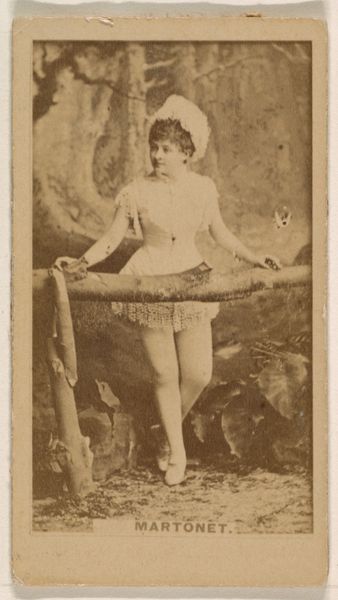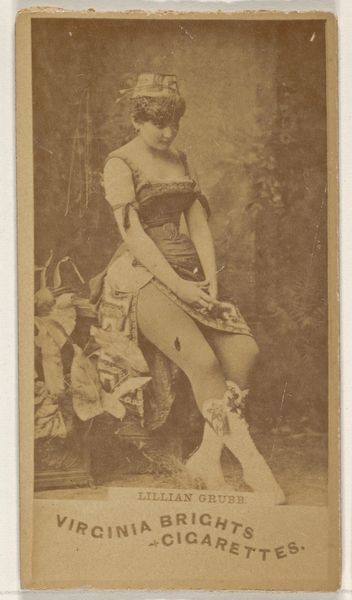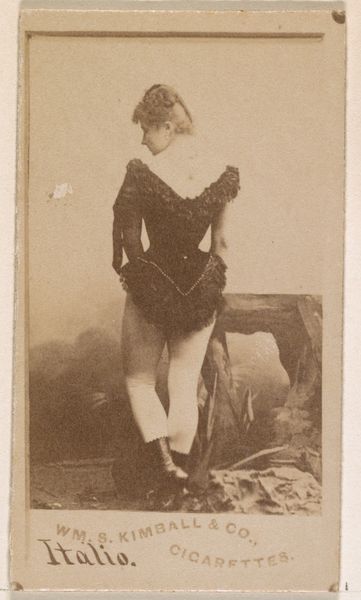
Card Number 241, Lillian Grubb, from the Actors and Actresses series (N145-2) issued by Duke Sons & Co. to promote Cross Cut Cigarettes 1880s
0:00
0:00
drawing, print, photography
#
portrait
#
drawing
# print
#
figuration
#
photography
#
19th century
#
erotic-art
Dimensions: Sheet: 2 5/8 × 1 7/16 in. (6.6 × 3.7 cm)
Copyright: Public Domain
Curator: Looking at this print, there's an almost wistful air. The soft sepia tones give it this antique, dreamlike feel. Editor: Indeed. This is card number 241 from the Actors and Actresses series created in the 1880s by W. Duke, Sons & Co. to advertise their Cross Cut Cigarettes. What we're seeing is a portrait of Lillian Grubb, captured through photography and then reproduced as a print. It highlights the intersection of consumer culture and image production. Curator: Right. The commercial aspect is crucial here. Think about the paper stock, the printing process—lithography, perhaps? Each card was a tiny material object circulating within a larger system of commodity exchange, a token of consumption. Editor: Exactly. The portrait itself reinforces cultural narratives about women as objects of desire. Lillian's pose, her attire—or lack thereof—are designed to appeal to a specific male gaze, furthering a long tradition of eroticized images marketed to men. The fact that she is presented as both accessible and just beyond reach feels loaded. Curator: I find the contrast interesting between her implied availability and the constructed nature of the image. We're presented with a controlled, fabricated image created through studio settings, lighting, costuming, and printmaking techniques. All that labor condensed into a collectible card that ended up in a cigarette pack. Editor: These cards served as both advertisement and collectible items, thus incentivizing ongoing cigarette consumption. Their popularity reflects societal trends where female performers like Lillian Grubb played pivotal roles, yet often remained marginalized due to class constraints. This card highlights the tensions and power dynamics inherent in representation. Curator: Absolutely, it reveals the exploitation that often underpins glamour. Let’s also think about distribution channels, factories where these were produced, how that labor intersects with ideas presented on this small, portable artwork. Editor: Precisely, by focusing on material context, production and labor, this unassuming image reveals a world of interconnected meanings—race, gender, commerce—that help explain 19th century culture. Curator: Looking closer at its surface makes one rethink assumed narratives embedded in promotional ephemera. Editor: Agreed. Approaching this photograph through this lens lets us grasp its far-reaching socio-historical implications.
Comments
No comments
Be the first to comment and join the conversation on the ultimate creative platform.

